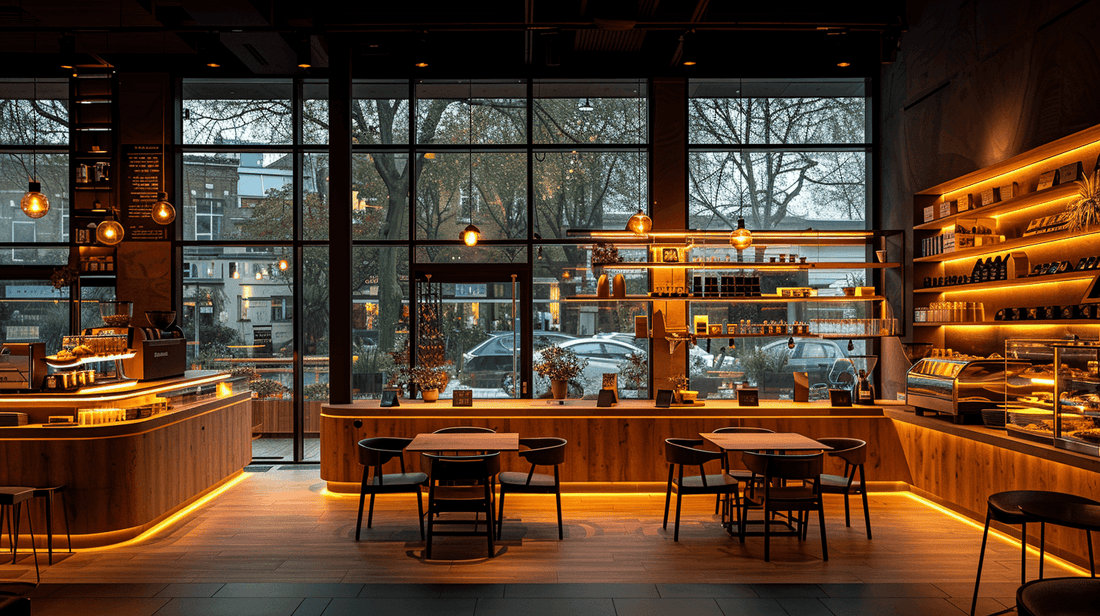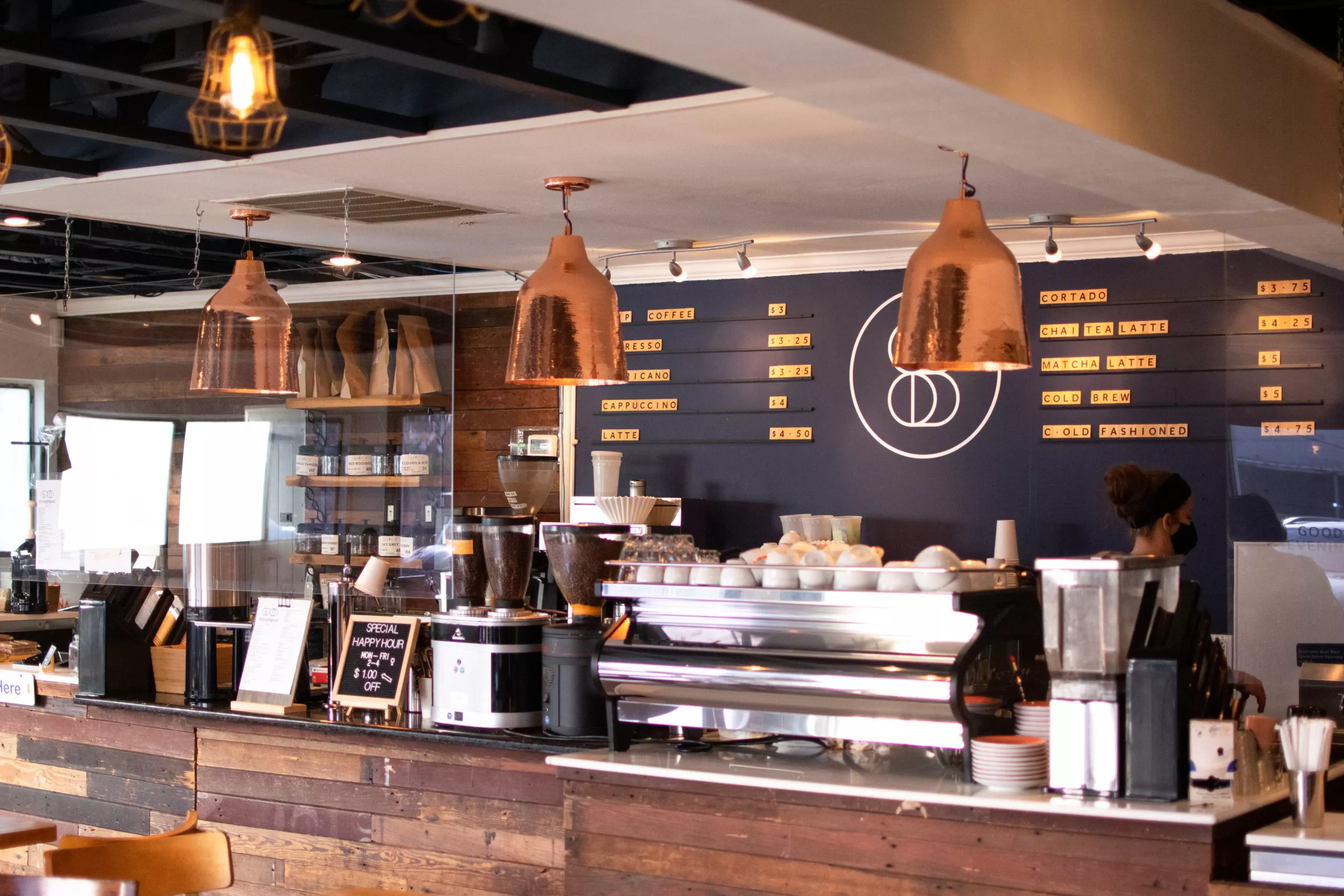Brooklyn Coffee Shops for a Perfect Blend of Flavor and Ambience
Just How to Choose the Right Kind of Coffee for Your Preference Preferences
Choosing the ideal coffee to complement your preference preferences needs an informed approach to both bean ranges and developing methods. Checking out various developing methods can boost these tastes, further individualizing the coffee experience.
Recognizing Coffee Beans
Understanding coffee beans is crucial for any type of coffee enthusiast looking for to enhance their developing experience. The structure of a great mug of coffee depends on the kind of beans selected, each offering distinctive flavors and attributes. Coffee beans typically fall under two primary categories: Arabica and Robusta. Brooklyn Coffee Shops. Arabica beans are known for their smooth, fragrant top qualities and complex tastes, frequently preferred for specialty coffees. They grow at greater altitudes and are much more vulnerable to parasites, leading to a higher price factor.
On the other hand, Robusta beans contain a greater caffeine material and are defined by a stronger, much more bitter preference. They are hardier and grow at lower altitudes, making them less pricey and typically used in espresso blends for included crema.

Exploring Developing Methods
Checking out numerous developing methods is essential for opening the complete potential of picked coffee beans. Each method uses an unique method to extracting scents, tastes, and appearances, eventually affecting the overall coffee experience. Typical developing methods include drip, French press, espresso, and pour-over, each with its distinct features and requirements.
Drip brewing is prominent for its ease and consistency, using a paper or steel filter to different coffee grounds from the made drink. French press, on the other hand, allows for complete immersion of coffee grounds, leading to an abundant, durable taste profile. Coffee is a focused kind of coffee generated forcibly hot water via finely-ground coffee, producing a strong shot that functions as the structure for different drinks like cappuccinos and lattes.
Pour-over developing grants the user better control over the extraction procedure, enabling exact modifications in water temperature level and flow price. This method often highlights the intricate tastes of specialty coffee beans. Ultimately, the option of brewing technique need to align with individual preferences and wanted taste end results, setting the stage for a rewarding coffee experience customized to individual preferences.
Identifying Flavor Profiles
Identifying flavor accounts is essential for valuing the subtleties of various coffee ranges. Coffee's flavor is influenced by several aspects, including the beginning of the beans, the processing approaches, and the roast level. Each of these aspects adds to a complicated range of tastes, which can range from fruity and flower to earthy and nutty.
To begin determining flavor accounts, take into consideration the coffee's origin. Beans from areas such as Ethiopia commonly show bright acidity and fruity notes, while those from Colombia may present a smoother, caramel-like sweet taste. The handling technique additionally plays an essential role; as an example, washed coffees tend to have cleaner, brighter flavors compared to all-natural processed beans, which can exhibit extra pronounced fruitiness.
Roast degree better influences the flavor account. Light roasts generally retain even more of the bean's initial characteristics, while dark roasts might introduce deeper, smokier tastes. Tasting notes commonly describe these characteristics, utilizing terms like chocolate, spice, or citrus. Establishing a palate for these tastes improves your coffee experience, allowing you to value the unique top qualities of each range and inevitably leading your selection toward the coffee that aligns with your preference choices.
Matching Coffee to Preferences
When it involves matching coffee to individual choices, recognizing individual taste is vital, as it enables a much more tailored coffee experience. Each coffee drinker has distinctive flavor inclinations that can guide their options, making it necessary to understand these preferences prior a knockout post to picking a mixture.
For those inclined in the direction of sweeter notes, coffee kinds with all-natural sweetness, such as Ethiopian Yirgacheffe or Brazilian Santos, might be particularly appealing. Conversely, if a choice leans in the direction of strong and durable flavors, choices like Colombian Supremo or Sumatran Mandheling might offer the wanted strength.
Moreover, the acidity level plays an essential duty in the coffee choice process. Coffee connoisseurs that appreciate a brilliant, zesty taste could prefer light roast coffees, whereas those who prefer a smoother, lower-acid experience may go with dark roasts. Furthermore, the choice of developing approach can substantially affect taste understanding; for instance, coffee tends to concentrate tastes, while pour-over strategies permit an extra nuanced account.
Ultimately, matching coffee to preferences involves a mindful consideration of taste profiles, level of acidity, and developing techniques, ensuring a enjoyable and gratifying coffee experience tailored to specific tastes.
Explore Different Ranges
To truly appreciate the varied world of coffee, trying out with different selections is essential. Each coffee bean possesses special flavor accounts affected by factors such as beginning, refining methods, and roast levels. By exploring numerous types, you can uncover a range of preferences that may align very closely with your preferences.
Begin your trip by trying beans from various areas, such as Ethiopian Yirgacheffe with its bright acidity and floral notes, or Colombian Supremo, understood for its well balanced flavor and mild sweetness (Cafe Bistro). Furthermore, take into consideration trying out different processing methods, such as washed versus natural, which can considerably change the last preference
Roast levels additionally play a critical duty; light roasts generally maintain the bean's inherent flavors, while dark roasts offer bolder, a lot more robust accounts. When experimenting, take notes on each range's taste characteristics and your overall impression.
Involving in samplings, whether at neighborhood cafés or via curated subscription solutions, can further improve your understanding. Eventually, welcoming a variety of coffee types allows you to fine-tune your taste and find your personal faves within the substantial coffee landscape.
Conclusion
Finally, selecting the appropriate coffee type demands an understanding of numerous beans, developing approaches, and taste profiles. By comprehensively discovering the distinctions between Arabica and Robusta selections, together with varied developing strategies, coffee lovers can uncover combinations that align with individual taste preferences. Trial and error with different ranges additionally enhances the article coffee experience, inevitably causing a much more individualized and gratifying pleasure of this beloved beverage. Such a method fosters a much deeper gratitude for the intricacies of coffee.
Understanding coffee beans is crucial for any type of coffee check this enthusiast seeking to boost their developing experience. Recognizing these subtleties enables coffee fanatics to pick beans that align with their taste preferences, paving the way for an extra tailored and enjoyable coffee experience.

Creating a palate for these tastes boosts your coffee experience, permitting you to value the distinctive high qualities of each selection and ultimately assisting your option toward the coffee that aligns with your taste choices.
Coffee aficionados that appreciate an intense, zesty taste may prefer light roast coffees, whereas those that prefer a smoother, lower-acid experience might opt for dark roasts.